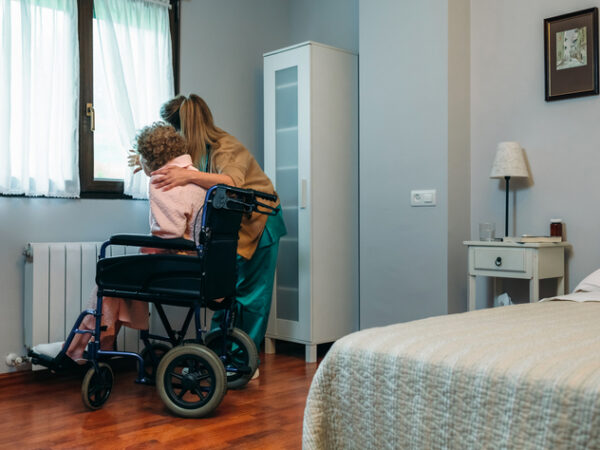Wandering is a common problem among people living with dementia and in the colder winter months, caregivers are on higher alert for incidences of wandering. Even in the early stages of dementia people can become confused or disoriented and be at risk for harm. Although according to the Alzheimer’s Association, 6 in 10 people with dementia will wander, there are strategies to help prevent wandering.
When an older adult with memory problems who is able to walk or drive returns later than usual, forgets routes to familiar places, or talks about “going to work” or “going home”, they may be at risk for wandering. Agitation and restlessness may also increase the likelihood of a person with dementia to wander off. Caregivers who take note of when this behavior is most common can help prevent wandering by planning calming activities for this time of day.
Creating a structured, daily activity plan can help foster a safe home environment. It is best not to correct someone with dementia who wants to visit past friends, family, or workplaces – redirecting and making sure they have had enough to eat and drink or used the bathroom can help prevent agitation.
People living with dementia should not be left unsupervised, especially in unfamiliar surroundings. At home, a bell or electronic alarm on doors can help alert family and caregivers if an elderly loved one has ventured out. Being prepared for such an event with a list of phone numbers of neighbors, friends, and family, along with a recent photo and updated medical information can be useful for police.
Caregivers of people with dementia should also keep a list of places the individual may return to – former places of work, home, restaurants, or places of worship. Wandering often follows the direction of the dominant hand which may be helpful in a search.
If a person with dementia is not found after about 15 minutes, a “missing person at risk” report should be filed with police. If the search continues, contact a wandering response service such as Silver Alert to help get the word out. If the person is carrying a cellular phone or in a car with GPS, police can track the device. Contact local hospitals periodically for any John or Jane Doe patients fitting the description.
It’s also a good idea for people who are known to wander to wear a medical alert bracelet and for caregivers to place identification labels inside clothes. Caregivers may also want to enroll their loved-one in the Alzheimer’s Association safe-return program or use a tracking device like the GPS SmartSole shoe insert.
Learn more about wandering and how to address it by following this link to the Mayo Clinic Caregivers newsletter.






Add Your Voice
0 Comments
Join the Discussion